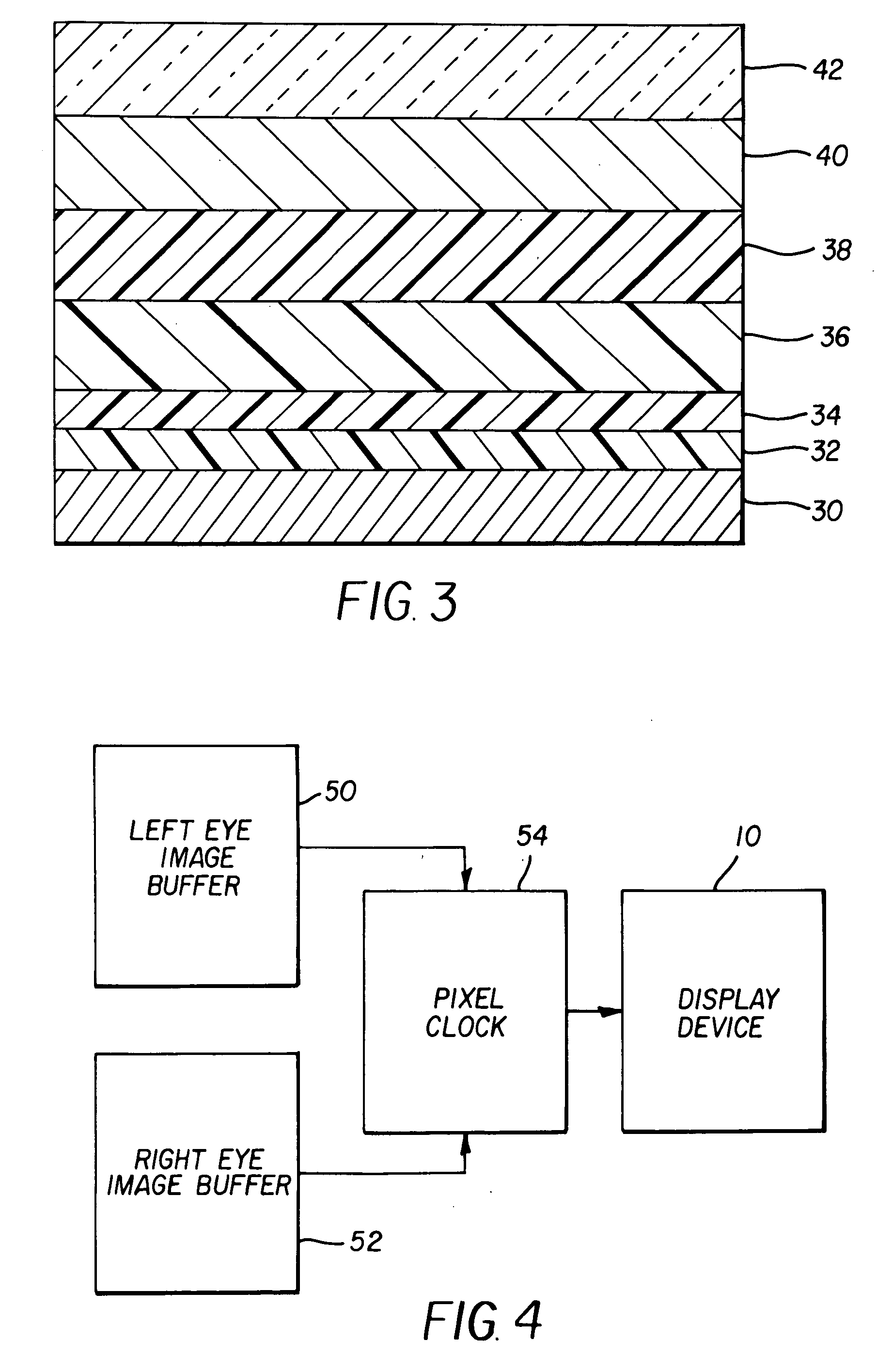3D stereo OLED display
a technology of light-emitting diodes and display screens, applied in the field of stereoscopic oled displays, can solve the problems of reducing the ability of multiple users to share and discuss the stereoscopic image, reducing the perceived spatial resolution of the display, and reducing the viewing angle of the display, so as to achieve the effect of effectively producing and altering the handness of circularly polarized light, and large color gamut and viewing angl
- Summary
- Abstract
- Description
- Claims
- Application Information
AI Technical Summary
Benefits of technology
Problems solved by technology
Method used
Image
Examples
Embodiment Construction
[0022] The invention described herein takes advantage of the fact that while the human visual system is sensitive to patterns that are displayed with high temporal frequency when these patterns are displayed with low spatial frequency, the human visual sensitivity has relatively low sensitivity to patterns that are displayed with high temporal frequencies when the spatial pattern is also high in frequency. FIG. 1 shows a function 2, which is plotted based upon equations provided in Yang and Makous, 1994 (“Spatiotemporal separability in contrast sensitivity”, Vision Research 34(19), pp. 2569-2576) and depicts the temporal frequency at which a typical human observer can detect flicker as a function of the spatial frequency of the pattern that is being displayed. As is well known in the art of visual psychophysics, the temporal frequency that is required to make a flashing light appear without flicker decreases as the spatial frequency of the flickering light increases. For this reason...
PUM
 Login to View More
Login to View More Abstract
Description
Claims
Application Information
 Login to View More
Login to View More - R&D
- Intellectual Property
- Life Sciences
- Materials
- Tech Scout
- Unparalleled Data Quality
- Higher Quality Content
- 60% Fewer Hallucinations
Browse by: Latest US Patents, China's latest patents, Technical Efficacy Thesaurus, Application Domain, Technology Topic, Popular Technical Reports.
© 2025 PatSnap. All rights reserved.Legal|Privacy policy|Modern Slavery Act Transparency Statement|Sitemap|About US| Contact US: help@patsnap.com



